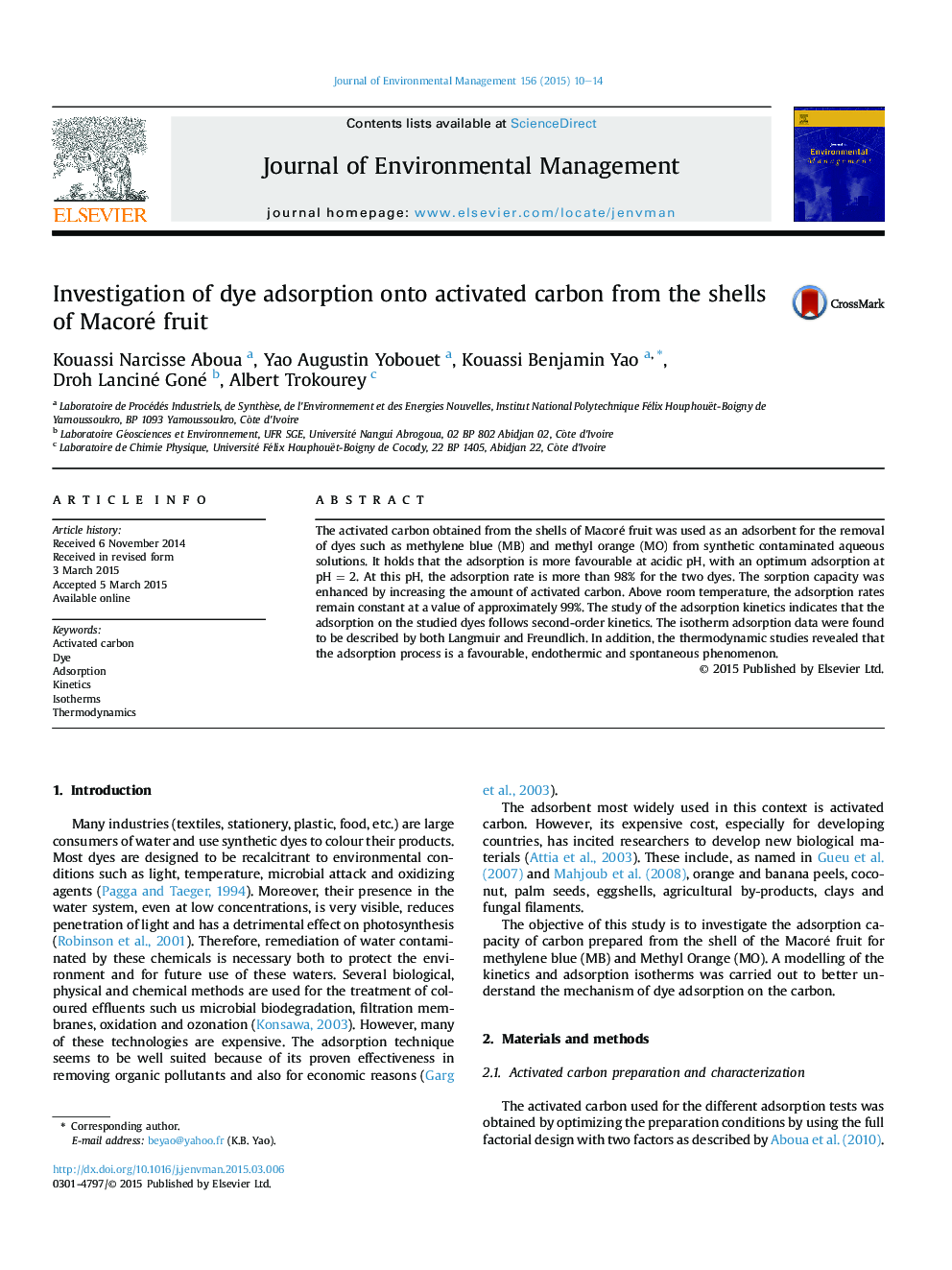| Article ID | Journal | Published Year | Pages | File Type |
|---|---|---|---|---|
| 7482148 | Journal of Environmental Management | 2015 | 5 Pages |
Abstract
The activated carbon obtained from the shells of Macoré fruit was used as an adsorbent for the removal of dyes such as methylene blue (MB) and methyl orange (MO) from synthetic contaminated aqueous solutions. It holds that the adsorption is more favourable at acidic pH, with an optimum adsorption at pHÂ =Â 2. At this pH, the adsorption rate is more than 98% for the two dyes. The sorption capacity was enhanced by increasing the amount of activated carbon. Above room temperature, the adsorption rates remain constant at a value of approximately 99%. The study of the adsorption kinetics indicates that the adsorption on the studied dyes follows second-order kinetics. The isotherm adsorption data were found to be described by both Langmuir and Freundlich. In addition, the thermodynamic studies revealed that the adsorption process is a favourable, endothermic and spontaneous phenomenon.
Related Topics
Physical Sciences and Engineering
Energy
Renewable Energy, Sustainability and the Environment
Authors
Kouassi Narcisse Aboua, Yao Augustin Yobouet, Kouassi Benjamin Yao, Droh Lanciné Goné, Albert Trokourey,
